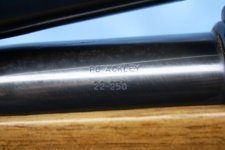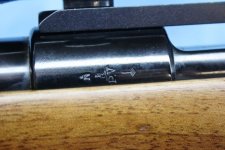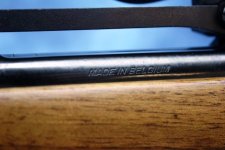I recently came across a FN Mauser built for the 22-250 Ackley Improved that was in great condition and since I did not have a high velocity 22 I went ahead and purchased it. The rifle has a match #4 contour barrel at 27 inches in length and the cleaning rod method provided about a 1:9 twist.
There are all sorts of methodologies published for fire forming cases from Nosler using live rounds to others using the COW method.
I have a Redding FL die and Redding competition seating die for the Ackley 22-250 40 degree shoulder and Lapua brass. The Lapua brass is for the stand Rem. 22-250 with the 28 degree shoulder. I also have 69 grain Sierra Match King bullets.
My question is RCBS makes a base forming die for the Ackley 22-250 40 degree shoulder. So can I use the RCBS die to form the shoulder then run it through the FL die, trim to length and start to develop loads using data from the Sierra and Nosler manuals.
thanks
Robert
There are all sorts of methodologies published for fire forming cases from Nosler using live rounds to others using the COW method.
I have a Redding FL die and Redding competition seating die for the Ackley 22-250 40 degree shoulder and Lapua brass. The Lapua brass is for the stand Rem. 22-250 with the 28 degree shoulder. I also have 69 grain Sierra Match King bullets.
My question is RCBS makes a base forming die for the Ackley 22-250 40 degree shoulder. So can I use the RCBS die to form the shoulder then run it through the FL die, trim to length and start to develop loads using data from the Sierra and Nosler manuals.
thanks
Robert



